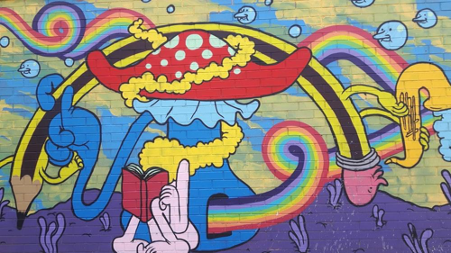5 Facts You Need to Know About Psychedelics and PTSD
Jun 30, 2021 09:06

As science begins to uncover more useful information about the use of psychedelics in PTSD treatment— here’s what you need to know.
Tracks have been made in the field of psychedelic therapy, as vigor is once again renewed in the breakthrough therapeutic potential of what were long considered to be simple party drugs. LSD, MDMA, Ketamine, and even magic mushrooms have recently entered into research centers for their exceptional ability to help and treat some of the most stubborn psychiatric illnesses. Beyond the laboratory, people all over the world have already begun microdosing, Canada in particular being shown to have an immense underground following of the popular Silicon Valley production hack.
Using small doses, or sub-hallucinogenic levels of common psychedelics to help promote creativity, motivation, boost energy levels and mood. What is quickly being discussed as a near panacea, these drugs may have genuine merit in a number of chronic and debilitating medical issues— perhaps most notably in the newest promising treatments for refractory PTSD.
1. Psychedelics Are the Safest of All Drugs
Of all recreational drugs known to the modern party-goer, psychedelics are repeatedly ranked as the safest by The Global Drug Survey, an independent research company that collects data for public health and harm reduction. The Survey has shown year on year that psychedelics like magic mushrooms represent the lowest risk to public health. Not only because they have extremely low levels of toxicity— making them unlikely to result in hospitalization or dangerous adverse reactions, but they also represent an almost nonexistent likelihood of abuse and addiction.
2. Shorter Duration, Longer Effects
More than just being difficult to overdose on and nearly impossible to become addicted to, psychedelics also have been shown to have a longer duration of therapeutic effect. Which means that they work much longer than the traditional drugs they’ve run up against. For treatment resistant PTSD, of the few people who are actually capable of seeking appropriate treatment, a huge number end up “washing out” of treatment programs, or report continued symptoms following treatment. Resulting in one Oxford study referring to these modern treatments as ineffective as “even after [modern treatments], PTSD often remains a chronic illness, with high rates of psychiatric and medical comorbidity.” Which has left many researchers turning toward psychedelic, which have shown great promise in near immediate, and long-lasting, benefit. With some psychedelic treatments being shown as effective up to 3.5 years later.
3. Most Function Like Your Own Brain Chemistry
When it comes to classic psychedelics like LSD and psilocybin (the psychoactive compound in magic mushrooms), these substances interact with your brain in the same way that your very own neurotransmitters do. Instead of performing similarly to modern antidepressant SSRIs (selective serotonin reuptake inhibitors), which prevent your brain from reabsorbing the neurotransmitter serotonin, psychedelics actually mimic serotonin itself. Essentially providing your brain with more serotonin, instead of just pooling existing stores. They also are being found to do something that no common antidepressant can: interacting with dopamine systems and the prefrontal cortex. Essentially allowing us to step outside of our own ego and emotional limitation and look at problems and trauma more objectively. Which could be one reason as to why they’re so effective and treating refractory mental duress.
4. Science is Supporting It
Science has had a long and promising relationship with psychedelics— both natural and classic, as well as synthesized. While research really began to take off as early as the 1950s much of the science was shut down in the late ‘60s following extreme public criticism and political stigma. However, in the modern era, science is once again looking toward psychedelics for their highly effective treatment potential when it comes to mental illness and even chronic pain. Becoming a highly-energized arena for research as the potential vs. risk scenarios seen so far are heavily weighted in benefit. Specifically, when levied against the modern “Gold Standards” of pharmaceuticals, which have been implemented in numerous hospitalizations, extreme reactions, low efficacy, and even may have had a hand in the global opium crisis.
5. Psychedelics Work When Other Drugs Won’t
All of this research is pointing towards the simple fact that psychedelics seem to work when other drugs won’t. What’s better is that they’re also finding that patients may not need to be subjected to hallucinogenic journeys to be able to reap the benefits. Where microdosing trials, coupled with a slew of anecdotal evidence supplied by those choosing to self-medicate, are showing real promise. Which could suggest that future treatments may be even more accessible to nearly everyone worldwide, as microdosing doesn’t interfere with daily schedules, most psychedelics are off patent (meaning pharmaceuticals could be affordable), and bespoke online dispensaries are already available in some countries.







































































